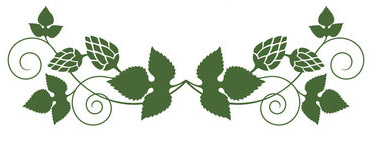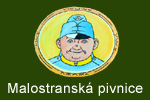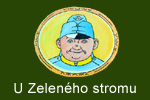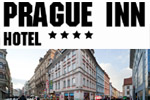The medieval building of "U Vejvodů"
The building "U Vejovodů" in the pre-Hussite period two buildings could be found here. In the present day the only remains of these buildings are the two separate gothic cellars with thick walls and further unconnected walls in the direction of the southern part of the house. On the ground floor there are two rooms with vaulted ceilings and cellars in the thickness of the walls. Earlier documentation relating to the first building (belonging to the present house number 941) goes back to 1403; the same can be said of the second, which for a certain length of time was linked with house number 527. Their uniting on the basis of ownership was probably established in the second half of the 16th century. Also at this time the alehouse known as "U Goliasu" (after its owner, Matouš Colias) is recorded in the building. Only around 1618 did the buildings undergo expensive renaissance reconstruction thanks to the owner Melichar Haldví of Neunperk; he extended the foundations for the two buildings and joined them together architecturally. The style of the building is typical of the Renaissance: the hall with the line of pillars on the ground floor, the vaulted ceiling with beams in full view on the first floor, roof and attic with scrolls, the main door and the large counter. In 1637 proximities of areas designated for the brewing of beer are still documented. The owner at that time, Mikuláš František Turek of Rosenthal, (he later became Mayor of the Old Town 1) also acquired the adjoining deserted number 941 in 1641, and in 1647 the adjoining buildings "U mladých Goliášů" (No. 527).
Around the middle of the 17th century the building underwent further reconstruction, documented by the crest in Early Baroque style over the door, the Early Baroque decorations painted on the beams and the triple vaulting close to the stairs. In 1717 Václav Vejvoda, who also became a Mayor of the Old Town (1745), purchased the premises at auction. The buildings of No. 527 remained an intrinsic part of "U Turků" (later named "U Vejvodů") up to 1809 and the building No. 941 up to 1812, although these three buildings were never joined structurally. In 1816 hearths for the production of vinegar were constructed in the yard. In 1840, following the project of Josef Kaur the younger, the east wing was built for farming purposes.
In 1908 the building was purchased by the "arts guild" (umělecká beseda), which continued with the renovations; the perpendicular part in the yard and the buildings around the second yard were destroyed. The adaptation was planned by Emil Moravec. The original wings of the door, dated around 1618, were replaced by new ones and new decorated beamed ceilings were found. In 1909 they began the construction of three new floors in Art Nouveau style. Josef Fanta participated in the realisation of the project. The presentation room on the rear yard, tested in 1910, was transformed into a theatrical hall in 1915. The extensive corner area was filled by two wings and one floor built on with attics. The parallel yard adjoins the three-storey Art Nouveau building with the cinema at the back. The façade facing onto the street is in Late Renaissance style and presents the bevelling of the edges; it is divided by a jutting balcony.
The fasade, smooth and uninterrupted, was built up on twelve axes, with three axes running together towards the floor. The central axial part continues under the main guttering; the wall of the attic presents three pairs of windows. A renaissance gable, with volutes and vases at the sides, appeared on the false front wall. The majority of the windows on the ground floor are new, but carefully reproduce the original renaissance style.
The semicircular window on the ground floor is set in the stone wall of what appears to be a type of gothic door. It begins from the fourth axis on the left, where there is a stone, a rectangular door with an arched entrance; the double-winged door with grilles of hammered iron goes back to 1919 and represents Neo-renaissance decoration. Only above the door can you see the shield of M. F. Turek of Rosenthal and Sturmfeld. The stone is carved into an ellipsoid shape (after 1646) and is held by angels and decorated. Further to the right is the entrance in Art Nouveau style (it dates from 1909), which leads into the semicircular vestibule. The stone Neo-gothic side door is also from the same year. The majority of the windows on the first floor keep to the original stone Renaissance counter-wall with straight eaves on the upper part and along the parapets. The double windows are divided by a stone pillar decorated with a plate with a four-petalled rose.
The west fasade onto the yard is smooth and a triangular oriel window is set into the roof. The ground floor presents a terrace with a double arch and a central stone pillar in Etruscan style; here we can also find an Art Nouveau entrance. The Renaissance windows on the first floor have the same structure as those on the side facing the street. The windows on the ground floor are Renaissance with a stone counter-wall.
Towards the front the façade is divided by a little tower with steps and, on the first floor, a raised renaissance wooden roof window rests on a stone support. The east view retains its renaissance appearance, including the false front with a volute above the attic. The main building represents a unique block with further presentation at a later time. The basement rooms were added; two Gothic cellars with tunnel vaulting can be found under the wings leading in the direction of Vejvodova Street and a third can be found under Jilská Street. From the renaissance hall, formed like an irregular pentagon, one can reach the stairs; the ceiling of the hall ends in small tunnel vaults with monastic traits like bulls' eyes, all drawing towards the large red marble pillar. The peripheral supports of the small cellars are also of marble. Under them you can see relief decorations with satyrs' heads, fruit and angels' heads. The wide borders with bulls' eyes are richly decorated with stucco leaves. Rose plates, winged heads and seven-pointed stars alternate with the bulls' eyes. A quite recent granite hearth, decorated with a lion bearing a shield with the monograms RK and AP, dominates the northeast wall. The Art Nouveau door leads to a hall with small cellars overlooking the yard. The gothic entrance leads to a wide rectangular tunnel-vaulted room. Above this, on the first floor, is a room with a decorated beamed ceiling in Early Baroque style, entered through a stone Early Baroque doorway with "ears". The three vaulted arches from the stairs to the vestibule of the hall belong to the same Early Baroque style. The north side of the above-mentioned hall has the ceiling supported by timber decorated with animal heads on the axis of the wall, dating from the renaissance period. On the ground floor, above the room with the row of columns, is a hall with a flat ceiling, a framed renaissance doorway and a recent granite fireplace with caryatids at the sides. On the left are two connected rooms with wood ceilings, one of which is painted with renaissance decorations and the other has roughly carved beams without branches. Under the roof are several rooms with panelled renaissance ceilings.
The three-storey building with attics was called an art studio, enclosed by the yard towards the south wing. This has a façade with eight axes, two small balconies and a large triangular gable in the centre. At the level of the first and third floors it is decorated with brown graffiti mainly representing figures and with perpendicular motifs in the centre of the building. The north façade is simple and masked by the cinema hall on the ground floor. At the level of the third floor are scenes and figures with animals. The inscription bears the names of the masons and painters. The third floor on the east façade shows a deer-hunting scene. The interiors have flat ceilings and are not of particular architectural interest.





